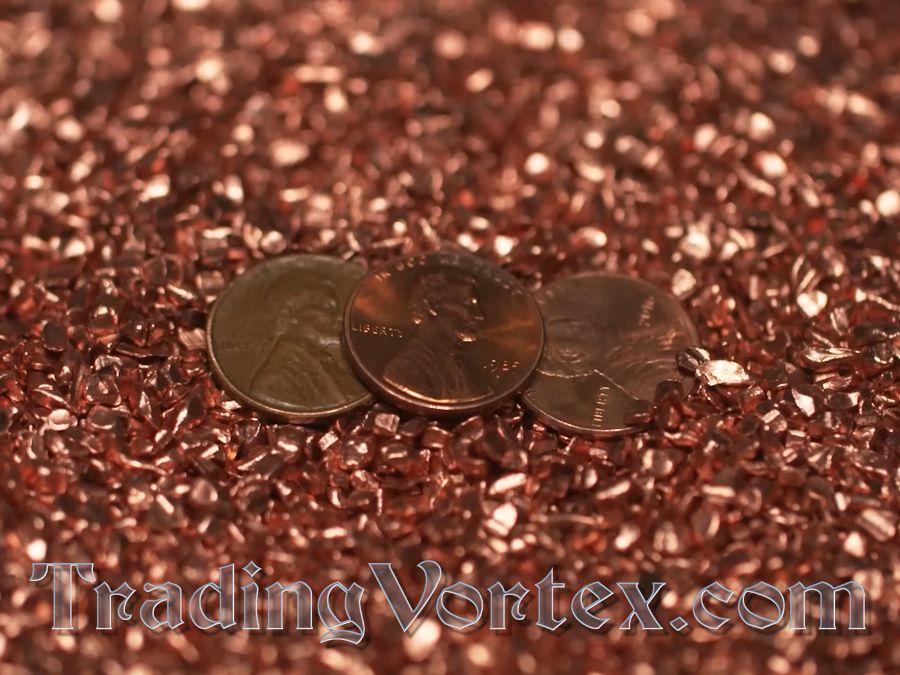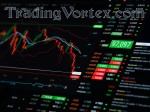Table Of Contents:
- Introduction to Copper Trading:
Basics of Copper Trading:
Getting Started with Copper Trading:
Tips for Successful Copper Trading:
Strategies for Profitable Copper Trading:
Advanced Techniques in Copper Trading:
Best Practices and Common Pitfalls in Copper Trading:
Future Trends in Copper Trading:
Conclusion: Navigating the Dynamic Copper Trading Landscape.
Introduction to Copper Trading:
Understanding the Significance of Copper in the Global Economy:
Copper, often referred to as "Dr. Copper" for its predictive power regarding global economic health, plays a pivotal role in various industries and economic landscapes worldwide. Understanding the significance of copper in the global economy is the first step in grasping the dynamics of copper trading.
Copper is a versatile metal that finds its applications in numerous sectors, including construction, electronics, transportation, and renewable energy. Its excellent conductivity, corrosion resistance, and malleability have earned it a place of prominence. As a result, copper is a fundamental component in the construction of infrastructure, wiring, and electronic devices, serving as a barometer for economic development and technological progress.
The Role of Copper in Diversifying Investment Portfolios:
Copper's intrinsic ties to economic growth and industrial activities make it an attractive asset for diversifying investment portfolios. In a world where investors seek assets that can thrive across diverse market conditions, copper stands out as a valuable addition.
Investing in copper can act as a hedge against economic downturns, as its price tends to rise when economies expand and demand for the metal surges. As such, including copper in a portfolio can help spread risk and provide a counterbalance to traditional assets like stocks and bonds. Whether you're an experienced investor or new to trading, understanding how copper fits into your investment strategy is essential.
Historical Context: The Evolution of Copper Trading.
To appreciate the nuances of copper trading, it's imperative to consider the historical evolution of this market. Copper trading has a rich history that spans centuries, reflecting the metal's enduring value.
In ancient civilizations, copper was used as a form of currency and played a significant role in trade. As time progressed, copper markets developed, with various exchanges and trading methods emerging to meet the growing demand for the metal. The historical context of copper trading provides insights into the various factors that have influenced copper prices, from technological advancements to geopolitical events.
This section sets the stage for a comprehensive exploration of copper trading, highlighting its economic importance, role in portfolio diversification, and its intriguing historical journey as a tradable commodity. As we delve deeper into the world of copper trading, you will gain a more profound understanding of the strategies and principles necessary for successful trading in this vibrant market.
Basics of Copper Trading:
What is Copper Trading?
Factors Affecting Copper Prices:
Understanding the factors that influence copper prices is fundamental to successful trading. Several key elements can impact the price of copper:
- Global Economic Health: Copper prices are closely linked to economic conditions. When economies are growing, the demand for copper increases, as it is a vital component in construction, infrastructure, and manufacturing. Conversely, during economic downturns, demand may decrease, leading to price fluctuations.
- Supply Disruptions: Copper supply can be affected by factors like labor strikes, natural disasters, and geopolitical tensions. Such disruptions can lead to sudden price spikes or declines.
- Currency Exchange Rates: Copper is traded in U.S. dollars, so currency exchange rates can impact copper prices. A stronger U.S. dollar often leads to lower copper prices, while a weaker dollar can boost prices.
- Global Trade Relations: International trade agreements, tariffs, and trade tensions between major copper-consuming countries can significantly impact copper prices.
- Technological Advancements: Innovations in copper extraction and recycling technologies can influence the supply of copper, affecting its price.
- Investor Sentiment: Market sentiment, speculative trading, and investor perceptions of future market conditions can lead to price volatility.
Supply and Demand Dynamics in the Copper Market:
The copper market operates under the principles of supply and demand. The interplay of these factors can affect price movements:
- Supply: Copper is primarily produced through mining, and the global supply depends on the output from copper mines. Major copper-producing countries, like Chile and Peru, have a substantial impact on the overall supply.
- Demand: The demand for copper stems from various sectors, including construction, electronics, and the automotive industry. A surge in construction projects or technological advancements can drive up demand.
- Inventory Levels: Copper stockpiles in warehouses and smelters can influence price dynamics. A decrease in stockpiles can indicate increased demand or supply constraints, potentially leading to price spikes.
Different Ways to Trade Copper:
Trading copper offers multiple avenues for market participation, catering to various trading preferences and risk profiles:
- Physical Copper Trading: Involves the actual purchase and sale of physical copper, often used by industrial users and manufacturers.
- Copper Futures and Options: Trading copper futures and options contracts allows traders to speculate on future price movements without owning the physical metal.
- Copper ETFs and ETNs: Exchange-traded funds (ETFs) and exchange-traded notes (ETNs) provide exposure to copper prices and can be traded on stock exchanges.
- Copper Mining Stocks: Investing in stocks of copper mining companies offers indirect exposure to the copper market.
- Copper CFDs (Contracts for Difference): CFDs allow traders to speculate on copper price movements without owning the underlying asset.
This foundational knowledge of copper trading sets the stage for delving deeper into strategies, risk management techniques, and advanced trading methodologies. Whether you're a beginner or an experienced trader, understanding the basics is crucial for success in the dynamic world of copper trading.
Getting Started with Copper Trading:
Congratulations on embarking on your copper trading journey! This section will guide you through the essential steps to initiate your copper trading adventure, ensuring you are well-prepared to make informed decisions and embark on your trading activities with confidence.
Opening a Copper Trading Account:
The first step in getting started with copper trading is to open a trading account with a reputable brokerage or trading platform. Here are some key considerations:
- Choose a Reputable Broker: Select a broker with a strong track record, excellent customer support, and a user-friendly trading platform.
- Account Type: Determine the type of trading account that suits your needs, whether it's a standard account, a margin account, or a demo account for practice.
- Verification: Be prepared to provide identification and financial information for account verification in compliance with regulatory requirements.
Selecting the Right Copper Trading Platform:
Selecting the right trading platform is crucial for your trading success. Consider the following:
- User-Friendly Interface: Opt for a platform that you find easy to navigate and understand.
- Execution Speed: A fast and reliable platform can be the difference between capitalizing on opportunities and missing out.
- Market Access: Ensure the platform offers access to the copper market and various trading instruments.
Understanding Key Terminology in Copper Trading:
To navigate the world of copper trading effectively, familiarize yourself with the essential terminology:
- Spot Price: The current market price of copper for immediate delivery.
- Contract Size: The standardized amount of copper in a single contract.
- Leverage: The ability to control a larger position with a relatively small amount of capital.
- Margin: The amount of money required to open and maintain a trading position.
- Pip: The smallest price movement in the exchange rate of a currency pair.
The Importance of Regulatory Compliance in Copper Trading:
Copper trading is subject to regulatory oversight to ensure market integrity and investor protection. It's imperative to understand the regulatory framework in your region and the broker's compliance with these regulations. Consider the following:
- Regulatory Authorities: Identify the regulatory body responsible for overseeing copper trading in your jurisdiction.
- Broker Regulation: Choose a broker that is regulated by relevant authorities, which adds a layer of safety to your trading activities.
- Risk Disclosure: Be aware of the risks involved in copper trading and any client agreements provided by your broker.
Understanding the basics of opening an account, selecting a trading platform, mastering key terminology, and ensuring regulatory compliance will set you on a solid foundation for your copper trading journey. As you gain experience and explore the strategies and advanced techniques discussed later in this guide, these foundational steps will remain vital to your success in the copper trading arena.
Tips for Successful Copper Trading:
As you embark on your copper trading journey, it's essential to equip yourself with the right strategies and techniques that can lead to successful and profitable trading. Here, we'll delve into some invaluable tips to enhance your skills and decision-making as a copper trader.
Risk Management Strategies for Copper Traders:
Effective risk management is a cornerstone of successful trading. Implement the following strategies to protect your capital:
- Position Sizing: Determine the appropriate size for your trades to limit potential losses while allowing for profitable gains.
- Stop Loss Orders: Use stop-loss orders to automatically exit a trade if the market moves against you, preventing substantial losses.
- Diversification: Avoid putting all your capital into a single trade; diversify your positions to spread risk.
- Risk-Reward Ratio: Evaluate the potential risk and reward for each trade to ensure that the potential gain justifies the risk.
Analyzing Market Trends and Price Movements:
Understanding market trends and price movements is crucial for making informed trading decisions. Consider these practices:
- Chart Analysis: Utilize candlestick charts, line charts, and bar charts to identify patterns, trends, and potential reversal points.
- Market Sentiment: Pay attention to market sentiment, news, and economic events that can influence copper prices.
- Fundamental Analysis: Evaluate economic indicators, supply and demand factors, and geopolitical events affecting copper prices.
- Historical Data: Study historical price data to identify trends and patterns that can inform your trading decisions.
Timing Your Copper Trades Effectively:
Timing is critical in copper trading, as it can significantly impact your profits and losses. Here's how to improve your timing:
- Use Technical Indicators: Incorporate technical indicators like Moving Averages, Relative Strength Index (RSI), and MACD to identify potential entry and exit points.
- Market Hours: Be aware of the hours when the copper market is most active and volatile. Optimal trading times can vary depending on your geographic location.
- Economic Calendar: Stay updated with an economic calendar to be aware of upcoming events that could affect copper prices, such as economic reports, central bank decisions, and geopolitical news.
Using Technical Analysis for Copper Trading:
Technical analysis is a valuable tool for copper traders. Incorporate the following technical analysis techniques into your trading strategy:
- Support and Resistance Levels: Identify key support and resistance levels on price charts to make decisions about entry and exit points.
- Candlestick Patterns: Learn to recognize common candlestick patterns like dojis, hammers, and engulfing patterns, which can indicate potential price reversals.
- Trend Analysis: Determine the prevailing trend and trade in the direction of that trend to increase the likelihood of profitable trades.
- Chart Patterns: Study chart patterns such as head and shoulders, triangles, and flags, which can help predict future price movements.
Implementing these tips for successful copper trading will enhance your trading skills and increase your chances of making informed, profitable decisions. Remember that copper trading is not only about opportunity; it's also about effective risk management and continuous learning to navigate this dynamic market successfully.
Strategies for Profitable Copper Trading:
In the world of copper trading, mastering the right strategies can make all the difference between success and frustration. Here, we explore various strategies that traders can employ to achieve profitable outcomes in the dynamic copper market.
Long-Term vs. Short-Term Copper Trading Strategies:
Long-Term Strategies:
- Buy and Hold: Invest in copper with the intention of holding it for an extended period. This strategy often suits those who believe in the long-term growth of copper due to its fundamental demand in various industries.
- Dollar-Cost Averaging: Regularly invest a fixed amount of money in copper, buying more when prices are low and less when prices are high. Over time, this can help lower the average purchase price.
Short-Term Strategies:
- Day Trading: Execute multiple trades within a single trading day, aiming to profit from intraday price movements.
- Swing Trading: Hold positions for a few days to several weeks, capitalizing on short to medium-term price swings.
Leveraging Fundamental Analysis in Copper Trading:
Fundamental analysis is a critical component of profitable copper trading. Here's how to leverage it:
- Supply and Demand Analysis: Monitor global supply and demand dynamics for copper, considering factors like mining output, industrial consumption, and trade policies.
- Economic Indicators: Stay informed about economic indicators, such as GDP growth, manufacturing data, and construction activity, as they can provide insights into copper demand.
- Geopolitical Factors: Keep an eye on geopolitical developments that can disrupt copper supply chains or impact demand from major consuming countries.
- Inflation Hedge: Recognize copper's historical role as an inflation hedge, as its price can rise during periods of currency devaluation.
Implementing Advanced Technical Analysis for Precision Trading:
Technical analysis involves the use of charts and indicators to predict future price movements. Consider these advanced techniques:
- Fibonacci Retracement: Identify potential support and resistance levels using the Fibonacci sequence, assisting in predicting price reversals.
- Elliott Wave Theory: Apply this theory to understand the cyclic nature of price movements and make more accurate forecasts.
- Ichimoku Cloud: Utilize the Ichimoku Cloud indicator to gauge support and resistance, trend strength, and potential entry points.
- Divergence Analysis: Identify divergences between price and technical indicators like the Relative Strength Index (RSI) or Moving Averages, which can signal upcoming price changes.
Position Sizing and Money Management in Copper Trading:
Proper position sizing and money management are crucial to preserve capital and avoid excessive losses:
- Risk-Reward Ratio: Maintain a favorable risk-reward ratio, typically aiming for a higher potential reward compared to the potential risk.
- Position Size Calculation: Determine the appropriate position size based on your trading capital and the level of risk you are comfortable with.
- Stop Loss Orders: Always use stop-loss orders to limit potential losses and protect your capital.
- Portfolio Diversification: Diversify your trading portfolio to reduce risk and avoid overexposure to a single asset or market.
Implementing the right strategy or combination of strategies can help you achieve profitable outcomes in the copper trading market. Whether you prefer short-term or long-term approaches, rely on fundamental or technical analysis, or focus on risk management, finding a strategy that aligns with your goals and risk tolerance is crucial for success.
Advanced Techniques in Copper Trading:
For traders seeking to take their copper trading skills to the next level, advanced techniques offer opportunities for increased precision, efficiency, and profitability. These techniques involve a deeper understanding of the copper market and the use of innovative trading methods.
Utilizing Derivatives and Options in Copper Trading:
Copper futures and options contracts provide advanced traders with opportunities to speculate on future copper prices. Key considerations include:
- Hedging: Use futures contracts to hedge against price fluctuations. This strategy can help protect your physical copper holdings from adverse price movements.
- Options Strategies: Employ various options strategies, such as straddles or strangles, to benefit from anticipated volatility or price swings in the copper market.
Hedge Trading Strategies for Copper Traders:
Hedging is a vital strategy in copper trading, especially for businesses or individuals with exposure to copper price fluctuations. Consider these hedge trading strategies:
- Forward Contracts: Enter into forward contracts to fix future copper prices, providing price predictability and mitigating the risk of adverse price movements.
- Options Hedging: Employ options contracts to protect against unfavorable copper price changes. This approach can be particularly valuable for copper consumers and producers.
- Pairs Trading: Engage in pairs trading by taking simultaneous long and short positions in related assets, helping to minimize the impact of broad market movements.
Algorithmic and Automated Trading in Copper Markets
Algorithmic and automated trading systems have gained popularity in copper markets for their speed and efficiency. Benefits include:
- High-Frequency Trading (HFT): HFT systems execute a large number of orders in a fraction of a second, capitalizing on small price movements.
- Algorithmic Strategies: Develop and implement custom algorithmic trading strategies, tailored to your specific trading objectives and risk tolerance.
- Risk Management: Utilize automated systems for risk management, including stop-loss orders, take-profit orders, and portfolio rebalancing.
Integrating AI and Machine Learning in Copper Trading
Artificial intelligence (AI) and machine learning have transformed the trading landscape. Traders can leverage these technologies in the following ways:
- Predictive Analysis: Use machine learning models to predict future copper price movements based on historical data, market sentiment, and external factors.
- Sentiment Analysis: Analyze social media and news sentiment to gauge market sentiment and identify potential market-moving events.
- Automated Decision-Making: Develop AI-driven trading algorithms capable of making autonomous trading decisions based on preset criteria.
These advanced techniques open new doors for traders, providing access to a world of sophisticated strategies and technologies. By mastering derivatives, options, hedging, algorithmic trading, and AI integration, you can gain a competitive edge and potentially achieve more consistent and profitable outcomes in the copper trading market.
Best Practices and Common Pitfalls in Copper Trading:
Copper trading, like any financial endeavor, comes with its set of best practices and potential pitfalls. In this section, we explore the strategies and insights that can guide you towards success, as well as common mistakes to avoid in the world of copper trading.
Maintaining Discipline in Copper Trading:
Discipline is the cornerstone of successful trading. It involves adhering to a set of rules and strategies and not letting emotions dictate your decisions. Here's how to maintain discipline:
- Trading Plan: Develop a well-defined trading plan that outlines your goals, risk tolerance, and strategies. Stick to it rigorously.
- Risk Management: Set strict stop-loss orders and adhere to them, even when the market appears promising.
- Emotional Control: Emotional reactions, like fear and greed, can lead to impulsive decisions. Keep emotions in check and follow your trading plan.
Avoiding Common Mistakes and Traps:
Recognizing and avoiding common trading mistakes is crucial for long-term success. Here are some common pitfalls to steer clear of:
- Overtrading: Trading excessively or with too much leverage can lead to significant losses. Trade with moderation and a clear strategy.
- Lack of Research: Trading without a deep understanding of the copper market and its influences is a recipe for disaster. Ensure you're well-informed before making decisions.
- Chasing Losses: Trying to recoup losses by making impulsive trades can compound your losses. Accept that losses are a part of trading and focus on your long-term strategy.
- Ignoring Risk Management: Neglecting risk management practices can lead to catastrophic losses. Always manage your risk through proper position sizing and stop-loss orders.
Staying Informed About Global Economic Events:
Global economic events have a significant impact on copper prices. Staying informed about these events can help you make informed trading decisions:
- Economic Calendars: Monitor economic calendars to be aware of upcoming releases of economic data, central bank decisions, and other events that can influence copper prices.
- Geopolitical Developments: Keep an eye on geopolitical developments, trade agreements, and international conflicts, as they can disrupt copper supply chains and demand dynamics.
- Currency Movements: Be aware of currency exchange rate movements, as copper is typically priced in U.S. dollars. Changes in currency values can affect copper prices.
Coping with Market Volatility and Uncertainty:
Copper markets can experience significant volatility and uncertainty. Here's how to navigate these challenges:
- Stop-Loss Orders: Utilize stop-loss orders to limit potential losses when markets become turbulent.
- Diversification: Diversify your trading portfolio to spread risk and reduce the impact of individual market volatility.
- Continuous Learning: Stay informed and continuously educate yourself about new trading strategies and market developments to adapt to changing market conditions.
- Paper Trading: Practice trading strategies and risk management techniques in a simulated or paper trading environment before risking real capital.
By adhering to best practices and avoiding common pitfalls, you can enhance your success in copper trading. Maintaining discipline, avoiding impulsive decisions, staying informed about global economic events, and adapting to market volatility are critical components of a well-rounded trading strategy.
Future Trends in Copper Trading:
As the world of copper trading continues to evolve, it's essential to look forward and consider the emerging trends and factors that will shape the copper market in the coming years. Understanding these future trends can help traders and investors make informed decisions and stay ahead of the curve.
Technological Advancements in Copper Trading:
The use of technology is poised to revolutionize copper trading. Key trends include:
- Digital Trading Platforms: The adoption of digital trading platforms and mobile apps will provide traders with easy access to copper markets and real-time information.
- Blockchain Technology: Blockchain can enhance transparency and security in copper supply chains, reducing the risk of fraud and counterfeiting.
- High-Frequency Trading (HFT): HFT algorithms will continue to play a significant role in copper trading, capitalizing on market inefficiencies and short-term price movements.
- Algorithmic Trading: More traders will adopt algorithmic trading strategies, leveraging complex algorithms to make trading decisions based on predefined criteria.
Sustainable Practices and Their Impact on Copper Trading:
Sustainability and responsible sourcing are becoming increasingly important in the copper market. Here's how sustainable practices are influencing copper trading:
- Green Copper Production: Demand for sustainably produced copper, with minimal environmental impact, is expected to rise as industries focus on reducing their carbon footprint.
- Recycling and Circular Economy: The recycling of copper is gaining prominence, as businesses and governments aim to minimize waste and extend the lifecycle of copper products.
- Regulatory Changes: Environmental regulations and international agreements may impact the production and trading of copper, encouraging a shift toward cleaner practices.
Geopolitical Factors Shaping the Copper Market’s Future:
Geopolitical factors can significantly impact copper trading. Keep an eye on these trends:
- Trade Policies: Ongoing trade tensions between major copper-producing and consuming countries, such as the United States and China, can disrupt copper supply chains and affect prices.
- Resource Nationalism: Some countries may adopt resource nationalism policies, affecting copper production, exports, and global supply.
- Mining Regulations: Changes in mining regulations, tax policies, and permitting can influence copper production and trading.
Prospects for Copper in a Changing Global Landscape:
Copper's role in the global economy is evolving as the world transitions to cleaner energy and technological advancements. Consider these prospects for copper trading:
- Electric Vehicles (EVs): The growing adoption of electric vehicles requires significant amounts of copper for batteries, charging infrastructure, and wiring.
- Renewable Energy: Copper is essential in renewable energy systems like wind turbines and solar panels, offering growth potential as the world shifts toward cleaner energy sources.
- 5G Technology: The deployment of 5G technology and the expansion of the Internet of Things (IoT) will drive demand for copper in telecommunications infrastructure.
- Urbanization and Infrastructure: As urbanization continues, the need for copper in construction and infrastructure development will remain strong.
By keeping an eye on these future trends and being prepared to adapt to changes in the copper market, traders and investors can position themselves for success in an evolving global landscape. The ability to leverage technology, embrace sustainability, navigate geopolitical dynamics, and seize opportunities in emerging industries will be essential for staying competitive in copper trading.
Conclusion: Navigating the Dynamic Copper Trading Landscape.
In the journey through "Copper Trading 101: Basics, Tips, and Strategies," we have embarked on a comprehensive exploration of the captivating world of copper trading. With a foundational understanding of copper's significance in the global economy, essential trading principles, risk management, advanced strategies, and future trends, you are now well-equipped to navigate the ever-evolving copper market with confidence and competence.
Key Takeaways for Successful Copper Trading:
Success in copper trading hinges on several key takeaways:
- Discipline and Risk Management: Maintain discipline in your trading and prioritize risk management to protect your capital and weather market fluctuations.
- Market Knowledge: Continually educate yourself about the factors influencing copper prices, from economic indicators to geopolitical events.
- Strategy Diversification: Explore a range of strategies, from long-term investments to short-term trading, and consider incorporating both fundamental and technical analyses.
- Adaptability: Be ready to adapt to market changes and leverage emerging technologies and sustainable practices that are shaping the future of copper trading.
The Ongoing Relevance of Copper Trading in Investment:
Copper trading remains a vital component of investment portfolios. Its intrinsic connection to global economic growth, technological progress, and the transition to cleaner energy solutions ensures its ongoing relevance. As industries evolve and economies expand, copper will continue to play a pivotal role, making it a dynamic and promising asset for investors.
The Ever-Evolving Copper Market: What the Future Holds?
As we conclude our journey through the world of copper trading, we must emphasize the importance of staying informed and adaptable. The future of copper trading holds a promise of technological advancements, sustainability, and evolving global dynamics. Whether you are a seasoned trader or a newcomer to the market, embracing change and being prepared to leverage emerging opportunities is key to your success.
In the vibrant world of copper trading, seizing the potential for profit while managing risks is a constant endeavor. With the knowledge and insights gained from this guide, you are well-prepared to thrive in the ever-evolving copper market. As you embark on your trading adventures, remember that the copper market's resilience and adaptability mirror the qualities of a successful trader. Stay informed, stay disciplined, and keep trading with confidence. The future of copper trading awaits, and it holds ample promise for those who approach it with knowledge and foresight.

















